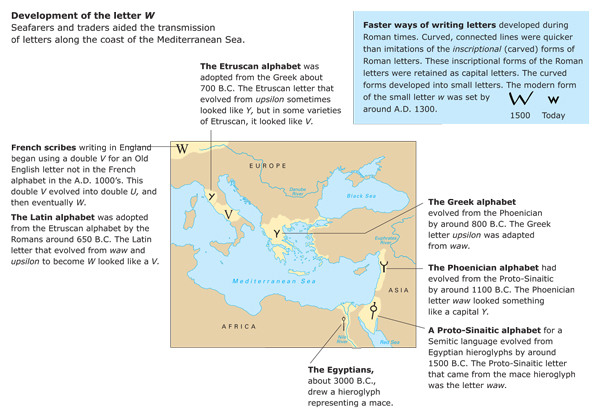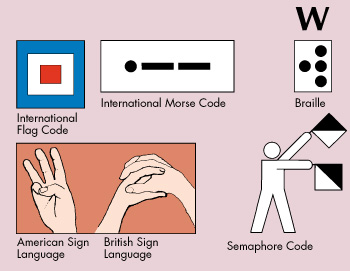W is the 23rd letter of the alphabet used for the modern English language. The W sound occurs in such words as water and flower. The letter W originated as a “double U.” The character was used to represent a sound more common in English, a Germanic language, and less common in some of the Romance languages, such as Italian, that developed from Latin.

The letter U evolved from the letter V. Consequently, the development of V, U, and W is the same for much of the history of the three letters. Scholars believe the letter V evolved from an Egyptian hieroglyph (pictorial symbol) that represented a mace, a club with a heavy head. The Phoenician letter that can be traced to the Egyptian mace hieroglyph is the sixth letter of the Phoenician alphabet, waw. Waw was the Phoenician word for peg.
When the Greeks adapted the Phoenician alphabet around 800 B.C., waw evolved into two Greek letters, digamma and upsilon. Digamma eventually evolved into the letter F. Upsilon, the source of U, V, and W, was written something like a capital Y. The Greeks used upsilon for the sound of the vowel U. The Etruscans adopted the Greek alphabet around 700 B.C. and also used this letter for their U sound. In some varieties of Etruscan, the letter looked like a Y, and in others, it looked like a V. When the Romans adopted the Etruscan alphabet in 650 B.C., they used the letter for both the U sound and the W sound. But the type of letter they adopted was the V-shaped variety.
During the A.D. 1000’s, scribes began to double the letter V, as VV, and used it as an Old English letter that did not exist in the Norman alphabet. Eventually, VV came to be written with the rounded shape as UU. The rounded U shape had come into use centuries earlier because it was easier to write than V. This “double U” evolved into W in English.

